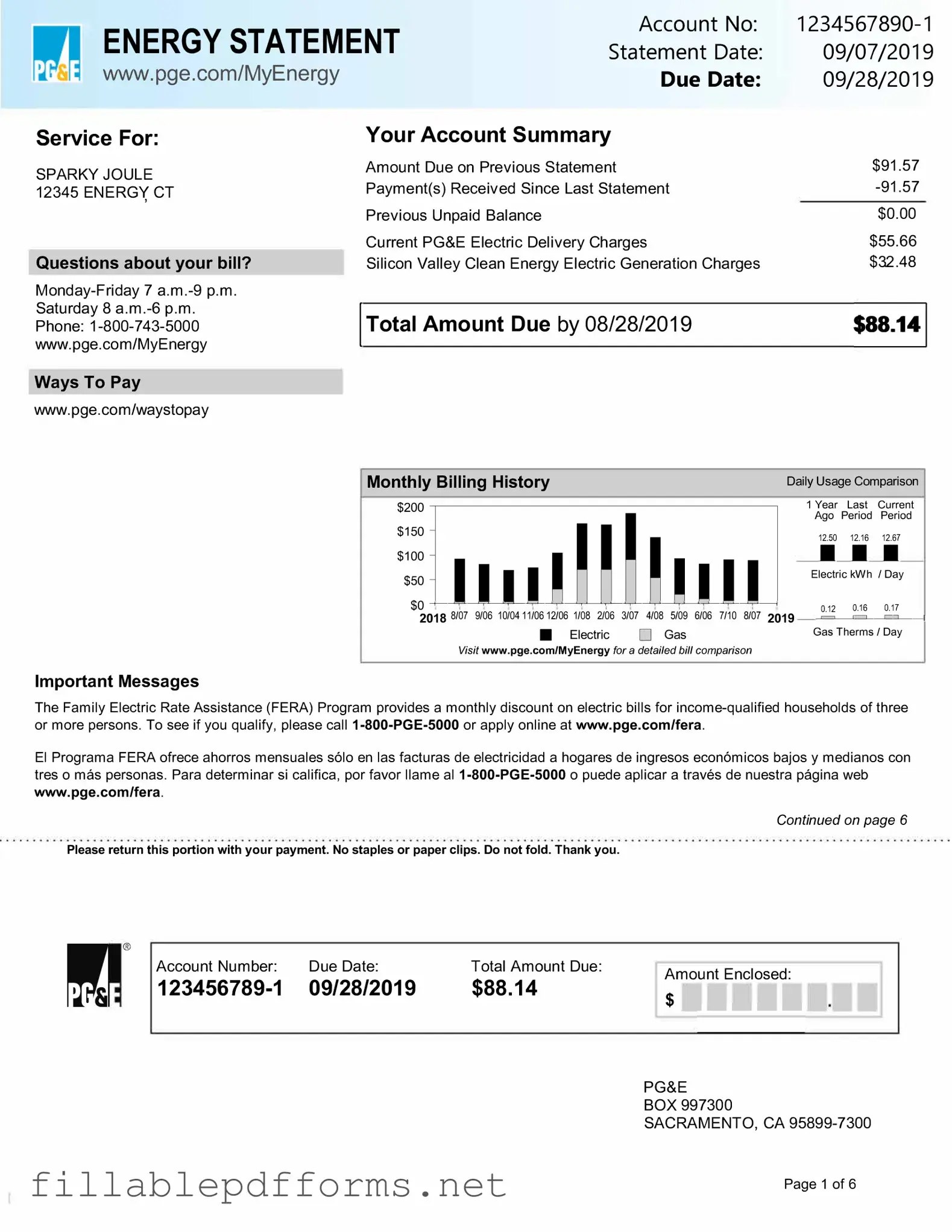Utility Bill PDF Template
The Utility Bill form is a document used by utility companies to provide customers with a detailed account of their energy or water consumption and the associated charges. This form typically includes information such as billing periods, usage statistics, and payment due dates. Understanding this form can help consumers manage their utility expenses more effectively.
Launch Editor Here
